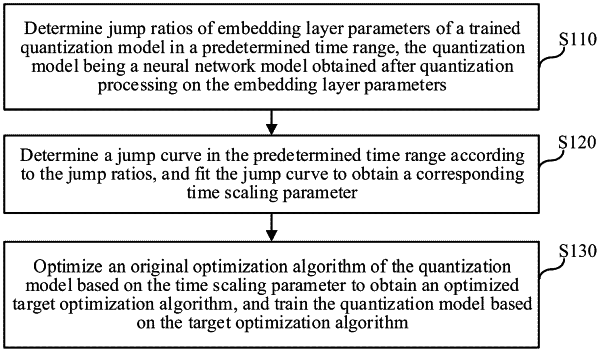| CPC G06N 3/08 (2013.01) [G06N 10/00 (2019.01); G06V 40/20 (2022.01)] | 19 Claims |

|
1. An optimization method applicable to an electronic device, the method comprising:
determining jump ratios of embedding layer parameters of a trained quantization model in a first predetermined time range, each jump ratio corresponding to a parameter jump of the embedding layer parameters of the trained quantization model in each predetermined time interval within the first predetermined time range, the quantization model being a neural network model obtained after quantization processing on the embedding layer parameters;
determining a jump curve in the first predetermined time range according to the jump ratios;
fitting the jump curve to obtain a corresponding time scaling parameter;
optimizing an initial algorithm of the quantization model based on the time scaling parameter to obtain an optimized target optimization algorithm;
training the quantization model based on the target optimization algorithm to obtain an optimized quantization model, wherein the time scaling parameter is configured to adjust a convergence speed and a precision of the quantization model;
acquiring user behavior data associated with a user at a terminal in a second predetermined time range;
learning the user behavior data using the optimized quantization model;
determining a user behavior feature corresponding to the user behavior data;
determining target recommendation information based on the user behavior feature; and;
providing the target recommendation information to the user at the terminal.
|